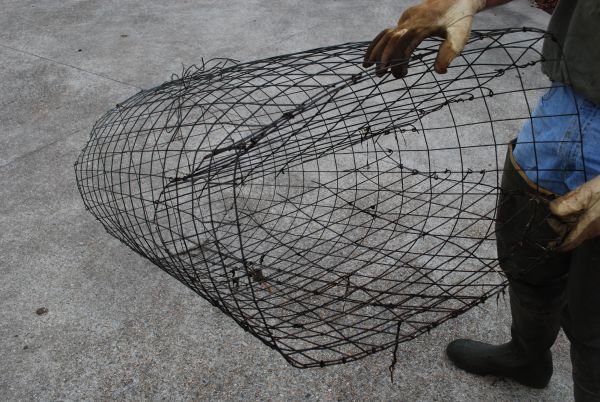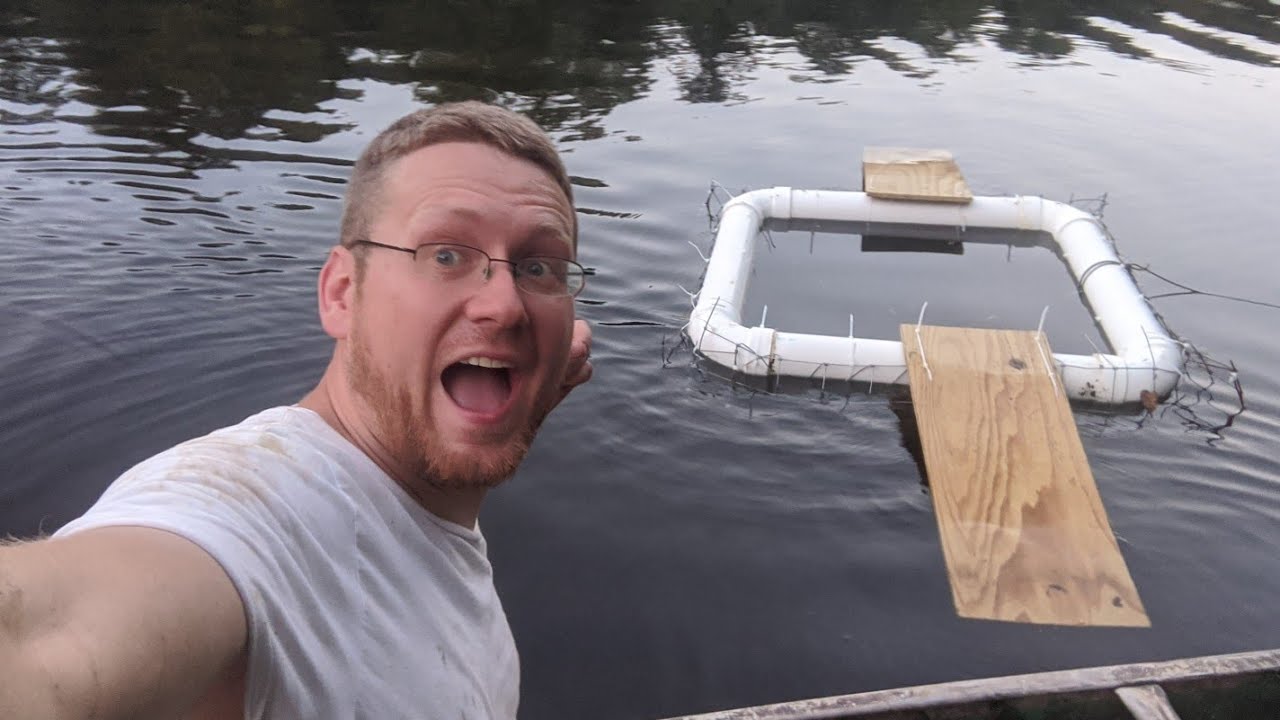To build turtle traps, gather materials like wire mesh, wood, and bait. Construct traps following local regulations.
Turtle traps are essential for managing turtle populations in bodies of water. Whether you are a wildlife enthusiast or a conservationist, understanding how to build effective turtle traps can help in controlling their numbers without causing harm. By using simple materials and following proper guidelines, you can create humane traps that allow for the safe capture and release of turtles.
In this guide, we will walk you through the steps to construct turtle traps and provide tips on baiting and placing them strategically. Let’s dive into the world of turtle trapping and learn how to build these essential tools for wildlife management.
Understanding Turtle Behavior
Turtles exhibit specific behaviors influenced by their habitats and feeding patterns. By understanding these aspects, you can effectively build traps to catch them.
Turtle Habitats
Turtles reside in various habitats such as ponds, lakes, rivers, and marshes. They prefer areas with ample vegetation and access to basking spots.
Feeding Patterns And Preferences
Turtles are omnivores, consuming both plants and small animals. They have specific preferences for food types based on their species and natural environment.
Types Of Turtle Traps
Learn to construct effective turtle traps using various methods like funnel traps, hoop nets, and turtle pots. These traps are designed to capture turtles safely and efficiently, providing a practical solution for controlling turtle populations in specific areas. Mastering the art of building turtle traps can help in wildlife management and conservation efforts.
Turtles are a common sight in many water bodies, and they can pose a problem for fishermen and swimmers alike. One way to control their population is to trap them. There are different types of turtle traps that you can use, depending on your preference and the type of turtle you are targeting. The three most popular types of turtle traps are box traps, funnel traps, and basking traps.Box Traps
Box traps are the most common type of turtle trap. They are simple to build and can be used to trap a variety of turtle species. The trap consists of a wooden or metal frame with a hinged lid. The trap is placed in the water with bait inside, and when a turtle enters to eat the bait, the lid closes, trapping the turtle inside. Box traps are ideal for trapping smaller turtles, but they can also be used to trap larger ones if the trap is big enough.Funnel Traps
Funnel traps are another popular type of turtle trap. They are designed to trap turtles as they move along the bottom of a body of water. The trap consists of a funnel-shaped entrance that leads to a holding area. The turtles enter the funnel to get to the bait, and once they are inside, they cannot escape. Funnel traps are ideal for trapping larger turtles, but they can also be used to trap smaller ones.Basking Traps
Basking traps are designed to trap turtles as they bask in the sun. The trap consists of a floating platform with a wire mesh bottom. The turtles climb onto the platform to bask in the sun, and once they are on the mesh, they cannot escape. Basking traps are ideal for trapping larger turtles that are too big for box and funnel traps. In conclusion, building a turtle trap is an effective way to control the population of turtles in your local water body. Box traps, funnel traps, and basking traps are the most popular types of turtle traps, and each type has its advantages and disadvantages. Choose the type of trap that works best for you and start trapping those turtles!Materials And Tools
When it comes to building turtle traps, having the right materials and tools is essential for a successful construction. Here, we will discuss the selection of trap materials and the essential tools needed for trap construction.
Selection Of Trap Materials
Choosing the right materials for building turtle traps is crucial. The following materials are commonly used for constructing effective traps:
- Mesh wire: This is essential for creating the trap structure and should be durable and rust-resistant.
- Floatation devices: These are necessary to keep the trap afloat in the water and can be made from materials such as foam or plastic barrels.
- Weights: Adding weights to the trap will help keep it stable and prevent it from drifting in the water.
- Ropes and ties: These are needed for securing the trap and attaching it to a stationary object.
- Bait: Choosing the right bait is essential for attracting turtles into the trap.
Essential Tools For Trap Construction
Having the right tools is crucial for efficiently building turtle traps. The following tools are essential for trap construction:
- Wire cutters: These are necessary for cutting and shaping the mesh wire to create the trap structure.
- Pliers: Pliers are needed for bending and securing the wire, as well as attaching other trap components.
- Knife: A sharp knife is essential for cutting ropes and other materials during trap assembly.
- Measuring tape: Accurate measurements are crucial for ensuring the trap is the correct size and shape.
- Drill and screws: These are necessary for attaching floatation devices and other components to the trap structure.

Credit: www.louisianasportsman.com
Building A Box Turtle Trap
Building a box turtle trap is an effective method for capturing these elusive creatures. Constructing a well-designed trap is crucial for successfully catching box turtles without harming them. In this guide, we will walk through the steps of building a box turtle trap, providing detailed instructions on each stage of the process.
Step 1: Constructing The Frame
To begin, construct the frame of the turtle trap using sturdy yet lightweight materials such as wood or PVC pipes. The frame should be rectangular in shape, with dimensions large enough to comfortably accommodate a box turtle. Ensure that the frame is stable and secure, as it will serve as the foundation for the entire trap.
Step 2: Adding The Entrances
Next, create entrances on opposite sides of the trap to allow the turtles to enter easily. These entrances can be designed as small hinged doors that open inward, ensuring that once the turtle enters, it cannot escape. Place the entrances strategically to maximize the chances of capturing the turtles as they roam around the trap.
Step 3: Setting The Bait Area
Set up a designated bait area within the trap to entice the box turtles. This area should be located at the far end of the trap, away from the entrances, to encourage the turtles to venture deep into the trap. Use strong-smelling bait such as earthworms, fruits, or vegetables to attract the turtles effectively. Ensure that the bait area is easily accessible for the turtles but not easily escapable once they enter.
Constructing A Funnel Turtle Trap
Constructing a Funnel Turtle Trap is an effective method for capturing turtles without causing harm. This type of trap uses a funnel structure to guide the turtles into a bait area where they become trapped. By following the steps outlined below, you can create a simple yet efficient turtle trap using readily available materials. Let’s get started on building your own funnel turtle trap.
Step 1: Creating The Funnel Structure
To begin constructing the funnel turtle trap, start by assembling the funnel structure. Use wire mesh or similar material to form a cone-shaped funnel with a small opening at the end. Ensure that the funnel is wide enough to comfortably accommodate the size of the turtles you are targeting. Secure the funnel in place, ensuring it is stable and will not collapse when turtles enter.
Step 2: Incorporating The Bait Area
Once the funnel structure is in place, it’s time to incorporate the bait area. Choose a location near the funnel opening and create a small enclosure using the same wire mesh material. Place the bait, such as food or other turtle attractants, inside the enclosure to entice the turtles into the trap. Ensure that the bait area is easily accessible for the turtles but not easily escapable once they enter.

Credit: m.youtube.com
Setting Up Basking Turtle Traps
Building turtle traps can be an effective way to manage turtle populations and protect natural habitats. Setting up basking turtle traps is a crucial step in this process, as it allows for the safe capture and relocation of turtles. Here, we will discuss the steps involved in setting up basking turtle traps to help you effectively manage turtle populations in your area.
Step 1: Selecting The Basking Site
Choose a basking site that is frequently visited by turtles. Look for areas with ample sunlight and a nearby water source, as turtles often bask in sunny spots near water. Ensure that the site is easily accessible for both turtles and trap maintenance.
Step 2: Designing The Floating Trap
Design a floating trap that will attract turtles as they bask. Use materials such as PVC piping, wire mesh, and flotation devices to create a sturdy and buoyant trap. Ensure that the trap is large enough to accommodate multiple turtles and that it has a secure entrance to prevent escape.
Tips For Successful Turtle Trapping
Learn how to construct effective turtle traps with these expert tips. Discover the best methods for building traps that ensure successful turtle trapping. Master the art of setting up traps to efficiently capture turtles in various environments.
If you want to build a turtle trap, you need to make sure that you do it right. There are a few things that you need to keep in mind to make sure that your turtle trapping is successful. In this section, we will discuss some tips that can help you build an effective turtle trap.Choosing The Right Bait
One of the most important things that you need to keep in mind when building a turtle trap is choosing the right bait. The bait you use will depend on the type of turtle that you are trying to catch. For example, if you are trying to catch a snapping turtle, you may want to use fish or meat as bait. On the other hand, if you are trying to catch a box turtle, you may want to use fruits or vegetables.Placement And Monitoring Of Traps
Another important thing that you need to keep in mind when building a turtle trap is the placement and monitoring of traps. You need to make sure that you place your traps in areas where turtles are likely to be found. For example, if you are trying to catch a water turtle, you may want to place your trap in a pond or lake. Additionally, you need to monitor your traps regularly to make sure that you are not accidentally catching other animals.Conclusion
By keeping these tips in mind, you can build an effective turtle trap that can help you catch the turtles you are looking for. However, it is important to remember that turtle trapping is not always legal, so make sure that you are following all local laws and regulations before you start trapping turtles.
Credit: www.wikihow.com
Conclusion
Building turtle traps requires patience and precision. By following the steps outlined in this guide, you can effectively trap turtles while ensuring their safety. Remember to check local regulations before setting up traps. Happy trapping and conserving the turtle population!





Leave a Reply